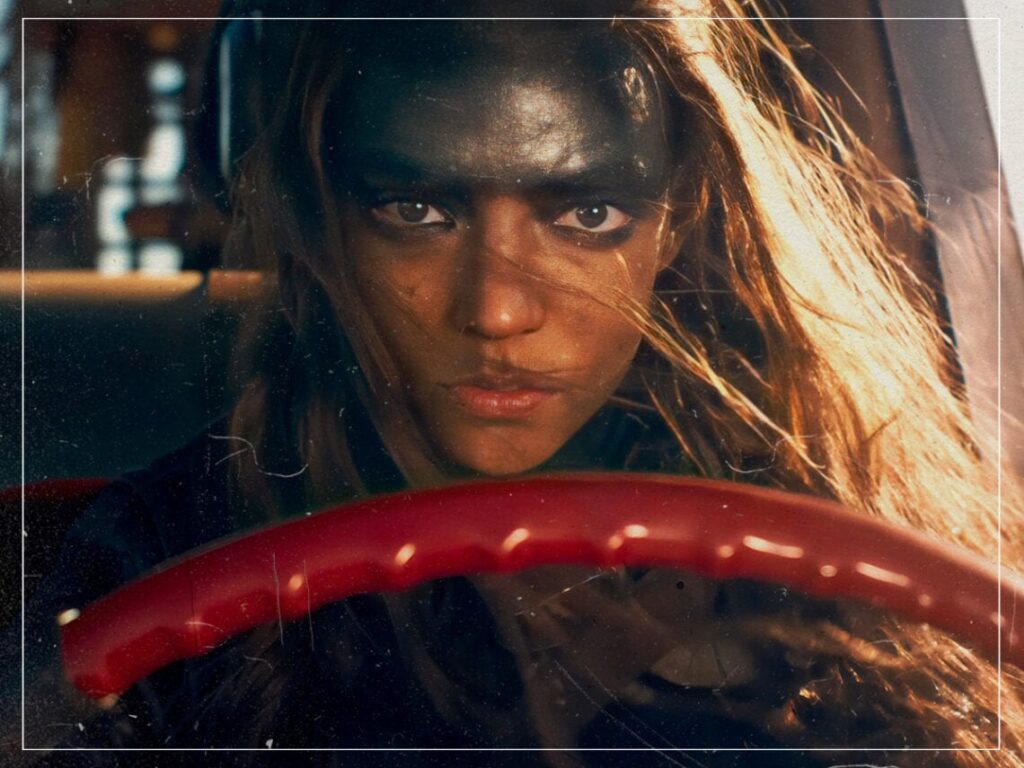Is George Miller’s non-Mad Max career one of unrealised potential?
 Posted On
Posted On
(Credits: Far Out / YouTube Still / Warner Bros.)
Let’s get this out of the way first so there aren’t any crossed wires; Mad Max fucking rules. It may well be the single greatest multi-film franchise in history based on consistency, quality, visual style, and imagination, but that’s precisely why George Miller has evolved into something of an enigma.
Kicking off his directorial career with a post-apocalyptic instant classic that became the most profitable movie ever made at the time, Miller followed it up with The Road Warrior, which is both one of the greatest sequels and finest action flicks of all time. It wasn’t until after he rounded out the original trilogy with Beyond Thunderdome that he tried his hand at something different, and the results were decidedly mixed.
Supernatural comedy The Witches of Eastwick may be a cult classic, but it didn’t live up to the potential of its A-list cast and top-tier director, with the focus on the (admittedly impressive for 1987) visual effects seemingly forcing Miller to rein in his signature style somewhat. Lorenzo’s Oil was a solid first foray into drama, but it never felt as though it was the work of the inimitable auteur behind Mad Max.
While it’s encouraged for filmmakers to mix up their approach from film to film, that special something that made Mad Max the unmistakable work of a singular visionary and a saga that couldn’t have possibly been concocted by anyone else but the trailblazing Aussie madman with nothing but a camera and a dream was noticeably absent.
He subsequently wrote and produced ‘Best Picture’ nominee Babe before stepping up to the plate to take the reins on the sequel, Pig in the City. The second chapter cost three times as much to make and flopped at the box office before his unexpected detour and sudden obsession with anthropomorphised protagonists intensified.
Happy Feet was a hit that won him an Academy Award for ‘Best Animated Feature’, but much like Babe, the sequel earned significantly less money in the face of a muted reception. The majesty of Fury Road speaks for itself, but Three Thousand Years of Longing was another damp squib that failed to catch fire at the box office and didn’t have a narrative strong enough to match its undoubted aesthetic merits.
Essentially, Miller’s career dating back to 1979 boils down to 12 features, five of which take place in the Mad Max universe. One of them is a Babe sequel, two of them are Happy Feet movies, and the other is a 67-minute documentary, 40,000 Years of Dreaming. That leaves The Witches of Eastwick, Lorenzo’s Oil, and Three Thousand Years of Longing as the outliers; only one of them is original material, but none of the three occupies the same pedestal as his finest work. In fact, it isn’t even close, suggesting that the Miller of Mad Max and the Miller of everything else may as well be two different people.
He did flirt with a rock and roll movie titled Roxanne in the mid-1980s, but after setting up shop in Los Angeles alongside Mad Max co-writer Terry Hayes to crack the script, they decided Tinseltown wasn’t for them. “Hollywood is an institutionalized form of conflict. The writer fights to defend his work against the director; the director fights the producer; and the producer fights the studio,” Hayes told Rolling Stone. “In Australia, you get a chance not just to be a writer or a director. You get a chance to be a filmmaker.”
He was hired to direct Contact before being fired and replaced with Robert Zemeckis when budgetary concerns and scheduling delays forced the studio’s hand, and he was attached to direct Brad Pitt in an adaptation of The Odyssey set in space. Miller overseeing an A-list superstar in a sci-fi spin on one of history’s most famous tale? That one was right up his street, but despite such a tantalising premise, it never came to be.
The Justice League: Mortal situation robbed audiences of the chance to see Miller try his hand at the world of spandex and superheroes; he turned down the chance to take on the live-action Akira, which still hasn’t happened, and was reported to be on the shortlist to direct The Batman before Matt Reeves landed the job when Ben Affleck permanently retired the cape and cowl.
Miller can continue making as many Mad Max movies as he wants for as long as he wants to because they’re a sensational string of spectacle-driven epics. On the other side of the coin, the Wasteland is what defines him, and for whatever reason, he’s never been able to replicate that magic in other arenas. Countless other franchise-adjacent filmmakers have thrived outside of the properties that made their names, but Miller’s non-Mad Max endeavours smack of being distinctly less than the sum of their supremely talented parts.
[embedded content]

